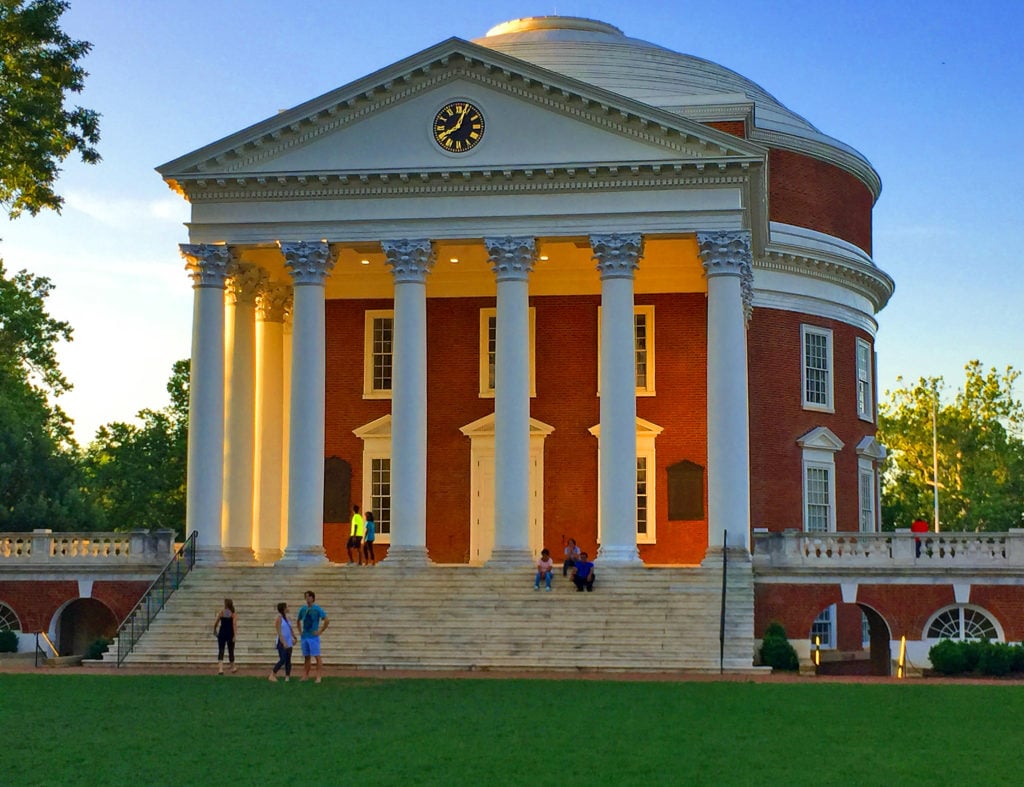Art World
What Can Medical Students Learn From Art History? The University of Virginia’s New Course Reveals How Art Shaped Our Understanding of Plagues
The course was put together after the abrupt shutdown of the University of Virginia.

The course was put together after the abrupt shutdown of the University of Virginia.

Pac Pobric

An online course speedily organized for more than 300 medical school students who were abruptly sent home from the University of Virginia in the wake of the COVID-19 pandemic is highlighting the often overlooked connections between medical training and the arts.
Medical school professors Marcia and James Childress put together “Confronting Epidemics: Perspectives from History, Ethics, and the Arts” in a matter of days after the school’s sudden closure in mid-March.
“To provide context, under normal circumstances, medical students start checking in on patients at 5:30 or 6 a.m., stay in the hospital until between 4 and 6 p.m., and spend the rest of the evening studying for examinations,” says Lydia Prokosch, a third-year medical student who took the course. “It was jarring to go from a strenuous yet critical part of our education to having little to no structure.”
The course was designed to fill that crucial need, and to give burgeoning clinicians reeling from the immediate health impact of the coronavirus a broader perspective on the cultural history of plagues, from the 1918 Spanish Flu to the HIV/AIDS pandemic.
In developing the course, the instructors worked with colleagues from across the university, including M. Jordan Love, a curator at the school’s Fralin Museum of Art who consulted on imagery to help students understand how societies have understood prior pandemics.
“Artists have responded to plagues in a variety of ways,” says Love, whose training is in medieval art history. “And they didn’t necessarily create imagery as a plague was happening, because they were too busy trying to survive.”
In the years after the bubonic plague of 1347–51, churches commissioned painters to create altarpieces depicting saints associated with healing. There were also poets such as Gilles Li Muisis, a Frenchman who chronicled the plague in an illustrated manuscript that included images of mass burials.

An engraving depicting a plague doctor from Rome, circa 1656. Courtesy WikiCommons.
“When you look back on these images and compare them to those we see coming out of Brazil today, where we’ve seen stacks of coffins, it connects us to the people of the past in a profound way,” Love says.
Humanities courses are a longstanding part of the curriculum for University of Virginia medical students. “Early on, the interest was in keeping doctors well-rounded so they could converse with patients about something more than an antibiotic dose,” says Marcia Childress, a scholar of English literature who has been at the university since the 1980s. “But it has become clearer since that we can use the arts to teach and practice certain core clinical skills,” including observation, analysis, and the ability to tolerate ambiguity.
“Medical students are increasingly schooled to use certain algorithms when developing diagnoses and treatment plans,” she says. “But there are always clinical situations that are outside the perimeters of those algorithms, about which you need to be creative and imaginative about what you see.”
As part of the course, students were shown images of late-Renaissance-era plague doctors, who often wore beak-like masks as personal protective equipment (PPE), and were asked to draw or design their own PPE.
“We asked them, ‘what would make you feel safe?’” Childress says. “And some of the students were just as worried about having their own faces obscured, because they wanted to be able to communicate with their patients.” Some students even imagined decorating their PPE to present their individual personalities.
Childress stresses that the importance of empathy is a big part of courses such as these—and the point is not lost on her students.
“Practically speaking, empathy among medical students has been found to drop precipitously in the third year of medical education,” Prokosch says. “I wonder if small opportunities to pause, reflect, and make something new would help to ignite some of the compassion that drove us to choose the medical profession in the first place.”